11 best lenses for your new Nikon DSLR
posted Tuesday, December 13, 2016 at 10:30 AM EST
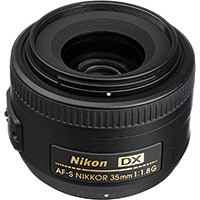
So you’ve got yourself a new Nikon DSLR -- congratulations! You’ll be shooting great pictures for years to come.
Many folks purchasing a new camera pay little heed to lenses, treating them as an afterthought. But with the right lineup of lenses, you'll be able to capture wide-open landscapes, gorgeous close-ups of flowers, crisp portraits of your kids and long-distance shots of wildlife.
The lens that came with your camera is a jack-of-all-trades -- it’s good at a bit of everything, but it’s not great. If you find yourself not getting the shots you imagined, then it might be time to look at investing in a new lens for your camera.
Who is this article for?
For this article, we're assuming you're a beginning photographer, so we'll try to keep things simple. We're also mainly focused on Nikon DSLRs with so-called APS-C sensors, which are typically sold for less than $1,000 dollars. These include the D3000-, D5000- and D7000-series of cameras, which at the time of writing are exemplified by the D3400, D5500 and D7200.
If you have a Nikon camera with a 'full-frame' (FX) sensor, some of these lenses won't be suitable for you. You can use DX lenses on an FX camera body, but the camera will need to be in a cropped-sensor mode; using the lenses normally will result in images that look like they’re shot through a tunnel. Common Nikon full-frame cameras are the D610, the D750 and the D810.
If you’re really new to photography with an interchangeable-lens camera, you might want to read our introduction to lenses article before proceeding with our recommendations.
Wide Angle
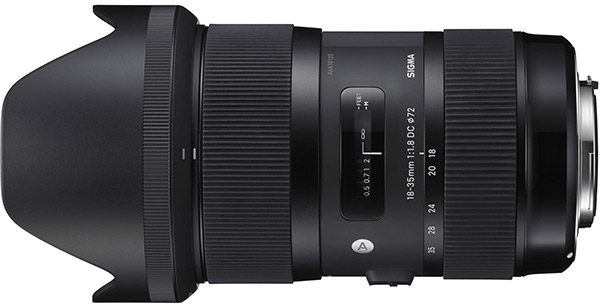
Sigma 18-35mm f/1.8 DC HSM "Art"
If you have $800 to spend, there is literally no better wide-angle zoom lens than Sigma's 18-35mm. As we noted in our review, it provides "shockingly sharp images." The f/1.8 constant aperture means it lets in a lot of light at all focal lengths, so the lens is a great choice for shooting indoors and at night when there isn't as much light to work with.
Need more convincing? We called it "...by a wide margin the best constant-aperture/wide-aperture ... zoom lens we've ever tested."
Price: $800
Good for: Anyone looking for a massive upgrade in image quality, sharpness and distortion over their kit lens; Photographers who shoot mostly between 18mm and 35mm.
Not as good for: Folks on a tight budget; Someone mainly interested in shooting wider than 18mm; Videographers who might want an option that allows stabilized video.
Read More: Sigma 18-35mm review; Sigma 18-35mm gallery
Purchase: Sigma 18-35mm lens from B&H
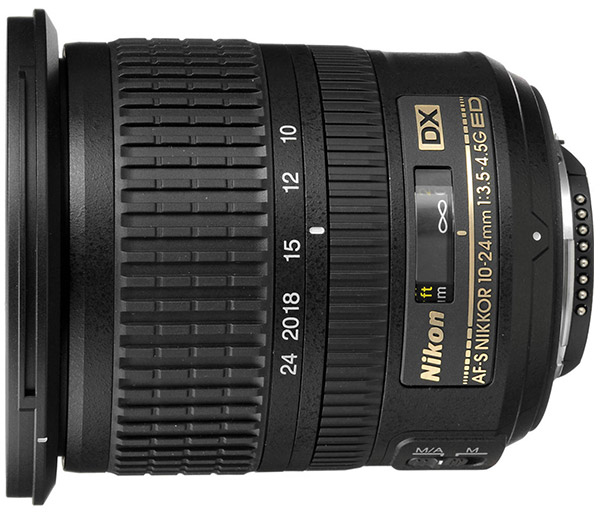
Nikon AF-S DX NIKKOR 10-24mm f/3.5-4.5G ED
If you want to go wider than 18mm, you’ll quickly find that some lenses can be very expensive for this purpose. The Nikon 10-24mm f/3.5-5.6G lens offers both a superwide and moderately wide-angle lens in one package. We gave the lens a favorable review when we looked at it back in 2009.
The Nikon 10-24mm is a workhorse of a lens -- it doesn’t have fancy perks like image stabilization, and it doesn’t necessarily need it. While image stabilization is great for shooting movies handheld, for wide-angle photography, it doesn’t produce a dramatic impact on standard still-image shooting.
Price: $900
Good for: Photographers who feel constrained by the 18mm limit of their kit lens and want something wider.
Not as good for: Folks who are primarily shooting indoors or at night (where there's not as much light); Handheld moving shooting.
Read more: Nikon 10-24mm f/3.5-5.6 DX review
Purchase: Nikon AF-S DX NIKKOR 10-24mm f/3.5-4.5G ED from B&H
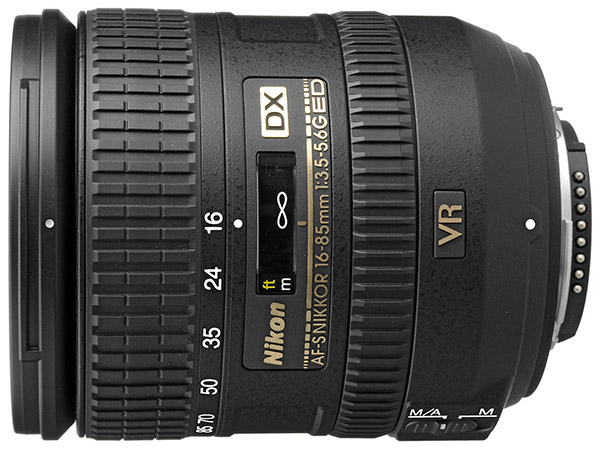
Nikon 16-85mm f/3.5-5.6G ED VR DX AF-S Nikkor
The Nikon 16-85mm has been around for a few years, but it’s proven itself as a solid replacement for the kit lens. The 16-85mm goes both a little wider and a little more telephoto than the typical 18-55mm kit lens. For years, the 18-55mm kit lens was not image-stabilized, so a key feature of the 16-85mm was its implementation of Vibration Reduction.
Price: $696
Good for: Anyone looking to travel light; Photographers on a budget. Photographers who shoot movies, as there is image stabilization in the lens.
Not as good for: Photographers are satisfied with the 18-55mm kit lens.
Read More: Nikon 16-85mm f/3.5-5.6G ED VR DX AF-S review
Purchase: Nikon 16-85mm f/3.5-5.6G ED VR DX AF-S Nikkor from B&H
Standard Lenses
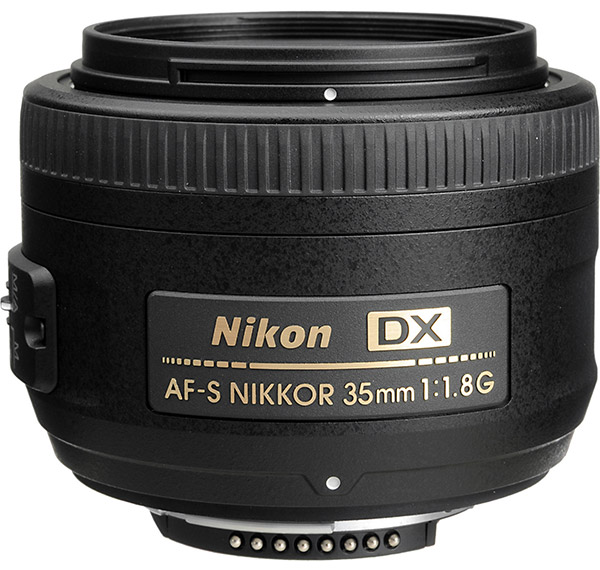
The Nikon 35mm f/1.8G DX is one of the more reasonably priced lenses in this list, and it’s been a hot seller since it was released in 2009. It’s easy to see why: on a DX-style camera, the lens produces a field of view that’s close to 50mm, which was a popular focal length for street shooters. The 50mm focal length is traditionally viewed as the "normal" focal length, or similar to what we see with our eyes.
The lens is small and light, making a very subtle camera package, and it produces nice, sharp images. With its maximum aperture setting of f/1.8, it can let in a lot of light, which lets you shoot in dim situations without sacrificing shutter speed or boosting the ISO unnecessarily.
Price: $196
Good for: Photographers who miss shooting with a 50mm prime lens; Street photographers; Shooting in dim lighting.
Not as good for: Folks who need a zoom lens, or any other kind of special application like sports shooting or macro shooting.
Read More: Nikon 35mm f/1.8G DX AF-S
Purchase: Nikon 35mm f/1.8G DX AF-S at B&H
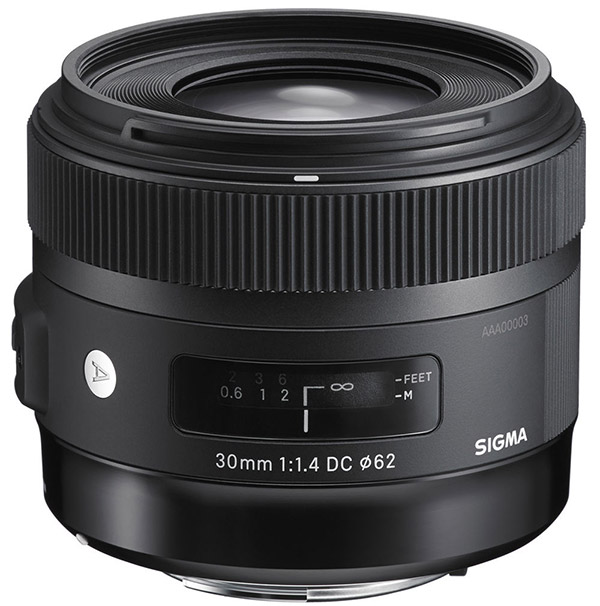
Sigma's 30mm f/1.4 DC HSM “Art” corresponds almost exactly to the 'normal' focal length for APS-C DSLRs. This is a great “walking around” lens, good for capturing undistorted views of your subjects and striking a good balance between wide-angle and telephoto.
As a member of Sigma's family of 'Art' lenses, it has excellent image quality and is solidly built. We called the 30mm Art "... a fantastic APS-C fast prime lens...," praising its "great image quality with nice, sharp images, low vignetting and only slight barrel distortion." You really can't do better for $499 in the 30-35mm range than this lens.
Price: $499
Good for: Photographers looking for fantastic image quality in this focal length; Low-light shooters.
Not as good for: Photographers on a tight budget; New photographers who don't generally shoot at this focal length.
Read More: Sigma 30mm f/1.4 'Art' review; Sigma 30mm f/1.4 'Art' gallery
Purchase: Sigma 30mm f/1.4 'Art' lens from B&H
Portrait lenses
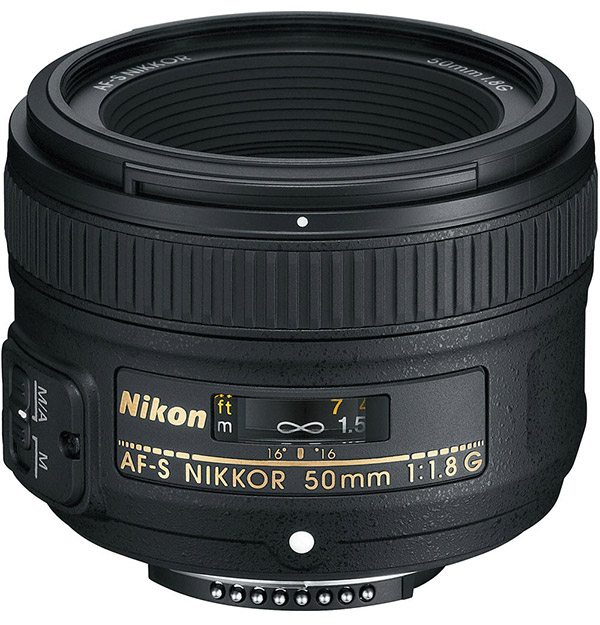
Often affectionately referred to as a 'Nifty Fifty' or 'Thrifty Fifty,' this lens is known for its low price and great image quality. These features make it the perfect starter lens for any DSLR newcomer looking for the best performance/price ratio out there. The f/1.8 aperture provides beautifully shallow depth of field (blurring the background) and makes it a perfect lens for portrait, flower, and food photography.
The downside is it's a bit soft wide open (at its maximum aperture), but fortunately, it becomes quite sharp when stopped down a little (at narrower apertures that let in less light). For just over $200, this is a great buy.
Price: $215
Good for: Any photographer who plans to take even the occasional portrait photo.
Not as good for: Those expecting tack-sharp photos at f/1.8, or superb build quality at this price.
Read More: Nikon 50mm f/1.8G AF-S review
Purchase: Nikon 50mm f/1.8G lens from B&H
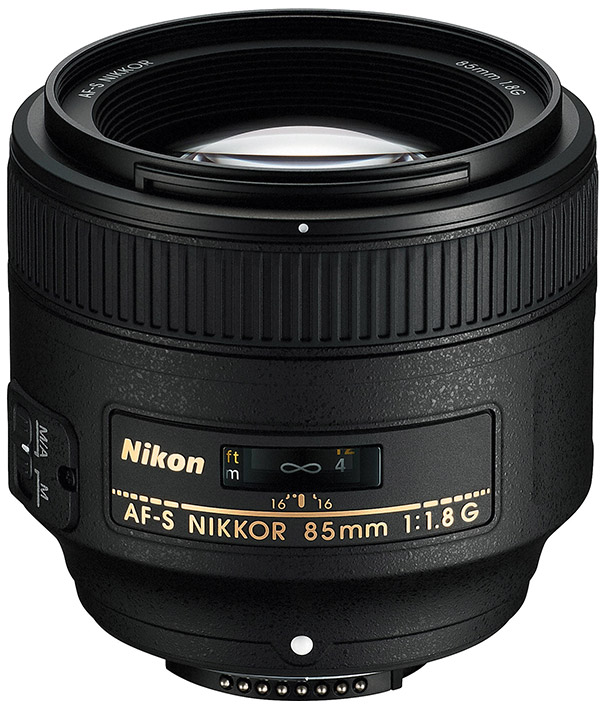
The Nikon 85mm f/1.8G is an exceptional lens: if you’ve seen flattering portraits of people where the background has seemed to melt away, it’s probably been accomplished with an 85mm lens. This Nikon lens, introduced in 2012, is an improved version of a long-time classic. The lens produces tack-sharp results even when used at its widest aperture. The lens also includes significant weather sealing so that it can be used in inclement conditions.
This lens works for both full-frame (FX) and APS-C (DX) Nikon cameras. It’s worth noting that the lens is still classified as a telephoto lens, and when mounted on a DX-style camera body, like the D5500, that effect will be amplified, with an effective field of view of around 128mm. If you want to get a portrait where you can see a bit more of the background, the 85mm may be too telephoto for you (a 50mm lens would probably be more useful in this situation)
Price: $480
Good for: Portrait photographers.
Not as good for: Folks wanting a bit more of the environment to show through in their portraits.
Read More: Nikon 85mm f/1.8G AF-S review
Purchase: Purchase Nikon 85mm f/1.8G AF-S from B&H
Macro Lenses
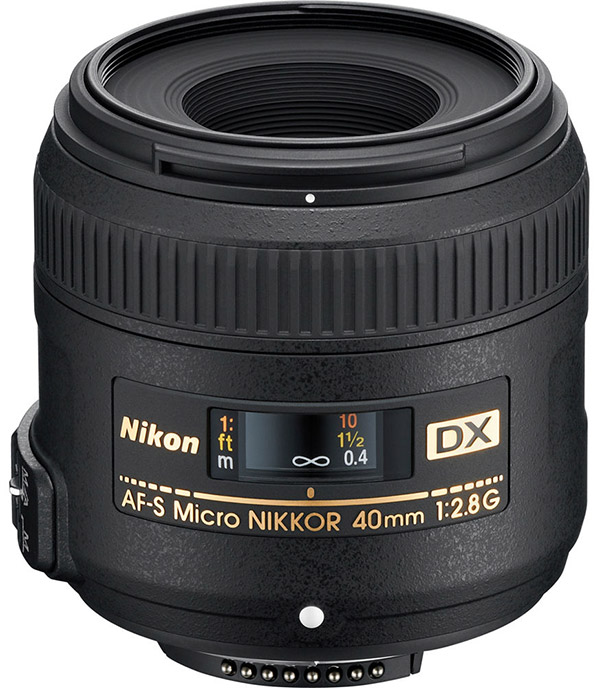
There is a range of different macro focal lengths, and 40mm is a good starting point for macro shooters using the DX system (it actually produces an effective field of view of around 60mm, which is great for macro shots).
The Nikon 40mm f/2.8G DX AF-S is a great lens to get you started into the world of macro photography. When using the lens at its minimum focusing distance, you can get 100% close-ups at just under four inches away from your subject. The lens includes two features useful for macro photography: a focus limiter that restricts autofocus to below 8 inches, and a scale that shows you what reproduction ratio you will be getting.
Other, more expensive lenses may feature image stabilization, but in a macro situation, image stabilization becomes less and less useful as the reproduction ratio increases. Image stabilization is great for everyday shooting, but to get into macro photography, you don’t need to break the bank.
Price: $276
Good for: Anyone looking to get into macro photography.
Not as good for: It’s not a great lens for other styles of photography, but it’s not terrible either.
Read More: Nikon 40mm f/2.8G DX AF-S review
Purchase: Nikon 40mm f/2.8G AF-S from B&H
Telephoto Lenses
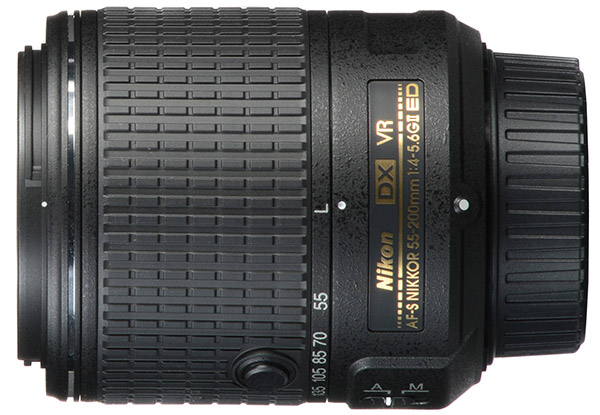
Nikon 55-200mm f/4-5.6G ED DX VR II AF-S
It’s entirely possible that you already have this lens, as it’s part of many Nikon kits; the 55-200mm supplements an 18-55mm kit lens, giving you two lenses that cover wide-angle all the way to telephoto shooting situations.
The Nikon 55-200mm is probably the least expensive way to get into telephoto photography, letting you bring faraway subjects closer. However, its variable aperture means that when you’re zoomed to 200mm, you’ll be shooting at a minimum of f/5.6, and that will require a reasonable amount of light to get images that aren’t dark or blurry. On the plus side, the variable aperture keeps the lens small and light: compare it to the 70-200mm telephoto zoom, and you’ll see a lens that ways 52 ounces, not 10.
Price: $147
Good for: Anyone looking to get into telephoto photography.
Not as good for: Photographers looking to capture images in low-light, or fast-moving images found sports or wildlife.
Read More: Nikon 55-200mm f/4-5.6G ED DX VR II AF-S
Purchase: Nikon 55-200mm f/4-5.6G ED DX VR II AF-S at B&H
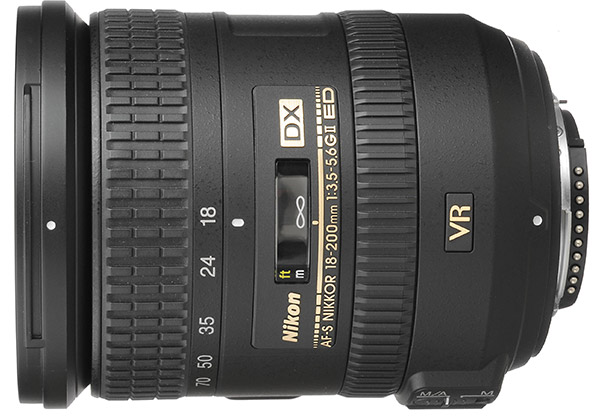
Nikon 18-200mm f/3.5-5.6G IF-ED VR II DX AF-S
The 18-200mm was one of the first “all-in-one” lenses for the Nikon DX format: it’s a zoom lens that basically combines both of the 18-55mm and 55-200mm kit lenses. When it was introduced in 2005, it was one of the first consumer lenses Nikon released that included Vibration Reduction, making it a hit for the average photographer who wanted one lens on their camera that could cover most shooting situations, from wide-angle to telephoto.
As a jack-of-all-trades, the 18-200mm is good at everything, but not great at all: it’s still limited by its variable aperture, so you’ll need a reasonable amount of light to get sharp, well-exposed shots without excessively raising the ISO. However, this is helped somewhat by the addition of vibration reduction. But if you’re wary of changing lenses and just want one lens that does it all, this could be the one for you.
Price: $647
Good for: Photographers who don’t want to change lenses, but want something for every situation.
Not as good for: Photographers who have specific shooting needs like macro, sports or portraits; Shooting in low light.
Read More: Nikon 18-200mm f/3.5-5.6G IF-ED VR II DX AF-S
Purchase: Nikon 18-200mm f/3.5-5.6G IF-ED VR II DX AF-S at B&H
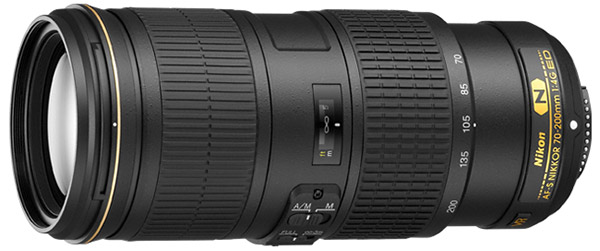
Nikon AF-S 70–200mm f/4G ED VR
The trusty 70-200mm is one of the most common zoom lenses for any photographer. It's a rare photojournalist, sports, wedding or wildlife photographer that doesn't own a 70-200mm zoom.
The Nikon 70-200mm f/4 is a newer and less expensive version of one of Nikon’s most popular lenses, the 70-200mm f/2.8 VR; however, that lens costs over $2,000. Only one aperture stop separates the two lenses, as they share much of the same features. Size and weight aren't one of them: one of the things people like about the f/4 version of this lens is that it is over an inch shorter and almost half as heavy.
Considering the 70-200mm f/4 on its own merits, it’s an exceptional lens for all the genres we mentioned above, and it will retain its value for years to come.
Price: $1,400
Good for: All new sports, wildlife or landscape photographers. The list of photographers who shouldn't consider this lens is short!
Not as good for: Photographers on a budget might find $1,400 tough to justify, but there just aren't 70-200mm options for less money.
Read More: Nikon AF-S 70-200mm f/4G ED VR review
Purchase: Nikon AF-S 70-200mm f/4G from B&H
Conclusion
We've sifted through dozens of lenses to distill this list and hope it was helpful to you! To wrap it up, we’ll summarize the above into a few price categories.
With $200, go for the Nikon 50mm f/1.8 if you’re thinking of portraits or shooting in low-light situations. If Macro shooting interests you, the 40mm f/2.8 is available for just a few dollars more. And if you have a hankering to get shots that are further away, the 55-200mm f/4-5.6 is a great lens to get for only $147.
With $400, go for the Nikon 85mm if you're planning to do more portrait shooting, the Sigma 10-20mm if you're more interested in wide angle photography.
With $700, the Nikon 18-200mm is a great choice if you don’t want to make any other choices. You could also consider the Sigma 30mm f/1.4 “Art” for street photography.
If money is no object, the Nikon 10-24mm is a great choice for wide-angle photography, and you can’t go wrong with the Nikon 70-200mm f/4 (or if money is truly no object, the f/2.8 version of the same lens).
Did we miss an obvious suggestion, or are you still lost? Leave your questions or thoughts in the comment section below!
• • • • •
Curious about the best lenses for other brands?
See our picks for Canon and Olympus below:
• 8 best lenses for your new Canon DSLR •
• The best Olympus lenses for pretty much everything •
